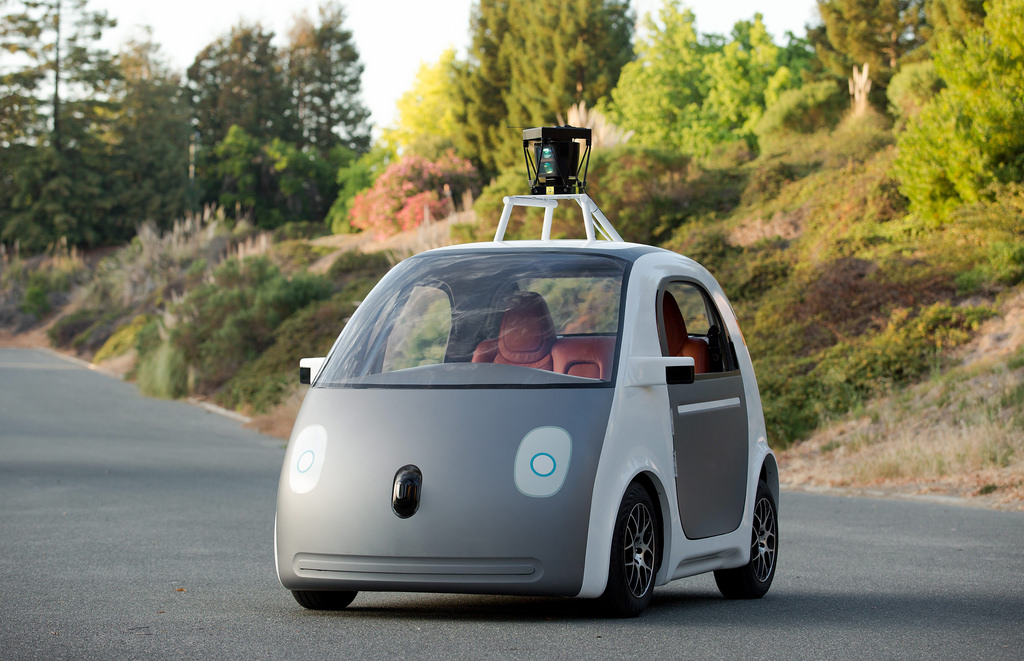By Joseph Vranich.
Any business person who has dealt with California’s frustrating laws, regulations and bureaucrats was nonetheless surprised to see a story with the headline, “Uber Ships Self-Driving Cars to Arizona After California Ban.”
Really? A state ban on Uber? The poster child of the billion-dollar-plus startup, tech-guru, market-disruptor club? Why would Sacramento give Uber, of all people, a bad time?
Reuters said Uber Technologies Inc. pulled its fleet of self-driving cars from the streets of San Francisco and sent them to Arizona’s friendlier territory:
The California Department of Motor Vehicles banned Uber’s self-driving cars from San Francisco just days after they first deployed. In response, Uber picked up and moved out. “Our cars departed for Arizona this morning by truck, Uber said… . We’ll be expanding our self-driving pilot there in the next few weeks, and we’re excited to have the support of Governor Ducey.”
Gov. Doug Ducey wooed Uber on social media the evening when the ride-hailing company pulled its self-driving test from San Francisco. “California may not want you; but AZ does!” he wrote on Twitter. The next morning, Uber’s fleet was headed his state’s way.
California moved to revoke registrations for Uber’s automobiles, but Uber said its vehicles require oversight by a human driver and shouldn’t qualify under California’s autonomous-driving rules. Nonetheless, the state Attorney General and soon-to-be Senator, Kamala Harris (loyal to unions and hostile to business interests), threatened legal action if the company continued operating automobiles without a permit.
Uber in Arizona
Gov. Ducey’s full statement reads:
Arizona welcomes Uber self-driving cars with open arms and wide open roads. While California puts the brakes on innovation and change with more bureaucracy and more regulation, Arizona is paving the way for new technology and new businesses. In 2015, I signed an executive order supporting the testing and operation of self-driving cars in Arizona with an emphasis on innovation, economic growth, and most importantly, public safety. This is about economic development, but it’s also about changing the way we live and work. Arizona is proud to be open for business. California may not want you, but we do.
Anthony Levandowski, the head of Uber’s Advanced Technologies Group, argued that because the company’s self-driving system is an early prototype and requires test drivers to keep their hands on the steering wheel at all times. It’s no different from driver-assist systems already on the market — and those are exempt from the requirement for a California permit.
Levandowski said that it isn’t clear why the DMV is requiring a permit now when they’ve known that Ubers have been on the streets of San Francisco over a month and have been operating safely for months in Pittsburgh, “where policymakers and regulators are supportive of our efforts.”
Last year, Uber opened its Center for Excellence in Phoenix, where it serves U.S. customers and Uber users worldwide. Now, it seems that more development work will occur in Phoenix. That’s what happens when a state is friendly to business interests.
Uber in Pittsburgh
Uber has been successfully testing autonomous-driving vehicles in Pittsburgh for some time. An extensive Wall Street Journal story in September — Uber’s Self-Driving Cars Debut in Pittsburgh — described how Uber is turning the city into an “experimental lab” where it will have as many as 100 specially equipped Volvo XC90s operating. Also, reported the WSJ, the city has its quirks — like the “Pittsburgh left turn” — which makes it a great location for testing autonomous vehicles.
It is customary for the first driver at a stoplight who is signaling a left turn to have priority over oncoming traffic when the light turns green. People in the oncoming lanes generally allow that leftward dash and are puzzled or even angry if it doesn’t occur. Uber has programmed its cars to allow other cars to make the ‘Pittsburgh left’ but not to make it themselves. The city is also notoriously difficult to drive through with steep hills and three rivers that make streets twist and turn unpredictably… . “If you can drive successfully in Pittsburgh, you’re pretty much done,” said Ragunathan Rajkumar, a professor at [Carnegie Mellon University] who specializes in autonomous vehicles.
Last year Uber opened an Advanced Technologies Center in Pittsburgh and this year is developing its second research facility there as part of a massive brownfield redevelopment site. Uber says it likes Pittsburgh’s “world-class research universities and engineers and a thriving technology community.”
Uber entered into a strategic partnership with Carnegie Mellon University to help create its new technology center and also to rely on the university’s National Robotics Engineering Center to do R&D in mapping, vehicle safety and autonomy technology. Safety is one of Uber’s major concerns.
Uber also selected Pittsburgh because of the clustering of robotics companies such as Carnegie Robotics and RedZone Robotics.
Although California prides itself on the pool of technical talent found in San Francisco and Silicon Valley, Uber has found justification to praise Phoenix and Pittsburgh for the the talent available from local universities and the community support of technology and innovation.
Uber’s experience in San Francisco shows that venture capitalists, Ph.Ds in robotics and software engineers are no match for an all-knowing California bureaucracy.
[divider] [/divider]
Originally posted at Fox & Hounds Daily.
One focus of my writings has been to address California’s difficult business environment, as described in the study, California Business Departures: An Eight-Year Review 2008-2015, updated Jan. 14, 2016.
Joseph Vranich is known as The Business Relocation Coach while the formal name of his business is Spectrum Location Solutions. Joe helps companies find great locations in which to grow. Also, Joe has been a Keynote Speaker for more than 20 years – see A Speaker Throughout the U.S. and in Europe and Asia.





